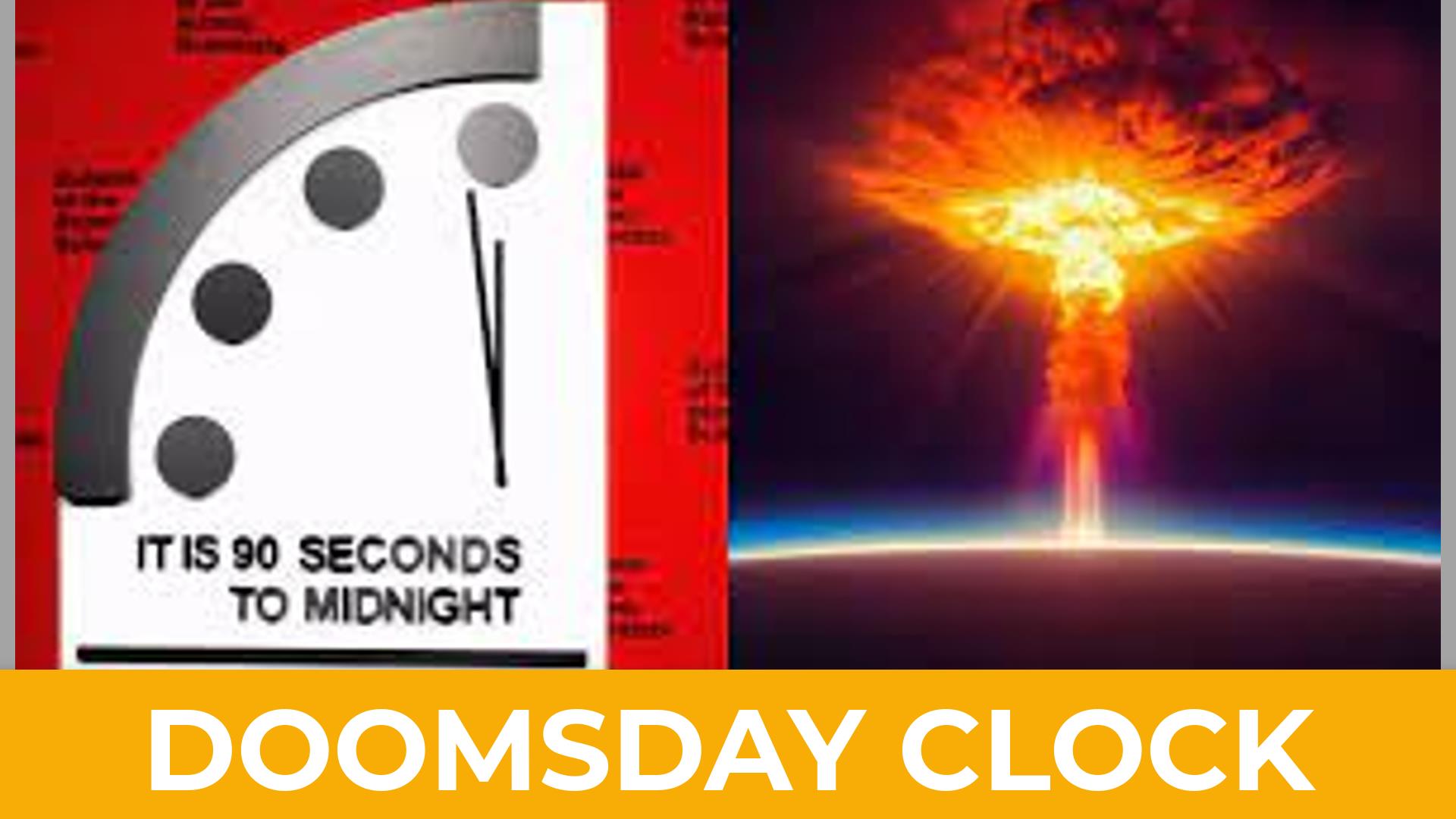The Doomsday Clock, maintained by the Bulletin of the Atomic Scientists, has been adjusted to 90 seconds to midnight, reflecting the heightened global risks primarily attributed to Russia’s invasion of Ukraine and the increased potential for nuclear escalation. The precarious situation is further compounded by ongoing threats posed by the climate crisis and the erosion of global norms and institutions crucial for addressing risks associated with advancing technologies and biological threats, such as the COVID-19 pandemic.
Rachel Bronson, the president and CEO of the Bulletin of the Atomic Scientists, emphasized the unprecedented dangers of the current time, with 90 seconds to midnight being the closest the Clock has ever been set to midnight. Urging leaders to explore all available channels for dialogue, Bronson highlighted the multitude of risks and challenges faced by the international community.
The Doomsday Clock’s setting is determined by the Bulletin’s Science and Security Board, with support from the Board of Sponsors, including Nobel Laureates. The previous setting was 100 seconds to midnight since 2020.
The Doomsday Clock statement underscores the profound impact of Russia’s war on Ukraine, raising questions about international conduct norms and the increased risk of nuclear conflict. Russia’s threats to use nuclear weapons, combined with actions at nuclear reactor sites, have added significant complexities to the global situation.
Leaders from various fields, including Mary Robinson, Chair of The Elders, and Ban Ki-moon, Deputy Chair of The Elders, emphasize the need for urgent and decisive action in 2023 to address the interconnected existential crises humanity faces.
The statement delves into specific threats beyond the immediate concerns related to the Russia-Ukraine War, including nuclear weapons proliferation, climate crisis effects, bio-threats such as infectious diseases, and challenges posed by disinformation and disruptive technologies.
Concerns are raised about the jeopardized New START treaty between the United States and Russia, China’s nuclear expansion, North Korea’s missile testing, Iran’s uranium enrichment, and the modernization of nuclear arsenals by various countries. The potential expiration of the New START treaty is particularly alarming, as it may trigger a nuclear arms race and heighten the risk of a nuclear exchange.
The impact of the Russia-Ukraine War on global efforts to combat climate change is discussed, highlighting disruptions in the supply and investment in natural gas. Additionally, the statement addresses the continuous rise in global carbon dioxide emissions and extreme weather events attributed to climate change.
Bio-threats are emphasized, with the COVID-19 pandemic underscoring the inadequacy of global preparedness for infectious diseases. Laboratory accidents and the increased risk of pandemics due to the modification of pathogens are identified as significant concerns.
Disinformation remains a pervasive threat, with instances of cyber-enabled disinformation and challenges to information governance. Norms of behavior in space are also disrupted, with Russian threats against US Starlink satellites and concerns about surveillance technologies.
The Doomsday Clock, initially created in 1947, serves as a symbol of humanity’s vulnerability to catastrophic events, encompassing nuclear weapons, climate change, and disruptive technologies. Founded by prominent scientists, the Bulletin of the Atomic Scientists continues its mission to inform the public and policymakers about existential threats to human existence.
Q 1.What is the Doomsday Clock?
Ans -The Doomsday Clock is a symbolic representation of the global risk of catastrophic events, such as nuclear war, created by the Bulletin of the Atomic Scientists in 1947.
Q 2.Why was the Doomsday Clock set at 90 seconds to midnight?
Ans -The setting was influenced by Russia’s invasion of Ukraine, increased nuclear escalation risks, climate crisis threats, and breakdown of global norms and institutions.
Q 3.Who determines the Doomsday Clock time?
Ans -The time is set by the Bulletin of the Atomic Scientists’ Science and Security Board with support from the Board of Sponsors, including Nobel Laureates.
Q 4.What are the main concerns highlighted in the 2023 Doomsday Clock statement?
Ans -The statement addresses nuclear weapons threats, climate crisis effects, bio-threats like COVID-19, and challenges posed by disinformation and disruptive technologies.
Q 5.How does the Russia-Ukraine War impact nuclear danger and global efforts to combat climate change?
Ans -The war heightens nuclear risks and undermines climate change mitigation efforts, affecting global energy dynamics and leading to increased carbon emissions.
Q 6.What are the specific nuclear weapons concerns mentioned in the statement?
Ans -Concerns include the potential expiration of the New START treaty, China’s nuclear expansion, North Korea’s missile testing, Iran’s uranium enrichment, and the modernization of nuclear arsenals by major powers.
Q 7.How does the climate crisis contribute to global threats?
Ans -Extreme weather events, increased carbon emissions, and climate change-related disruptions in food security are highlighted, exacerbating challenges faced by regions like West Africa and Central Europe.
Q 8.What bio-threats are emphasized in the statement?
Ans -The statement notes the increased frequency of infectious disease outbreaks, laboratory accidents, and the risk of biological warfare, particularly in the context of the Russian invasion of Ukraine.
Q 9.How does disinformation play a role in global threats?
Ans -The FAQs address cyber-enabled disinformation, challenges in information governance, and concerns about the control of information ecosystems in countries like Russia and China.
Q 10.When was the Doomsday Clock last adjusted, and what factors influenced the decision?
Ans -The clock was previously set at 100 seconds to midnight in 2020. The 2023 adjustment reflects ongoing global crises, including the Russia-Ukraine War, nuclear threats, climate change, and disruptive technologies.
